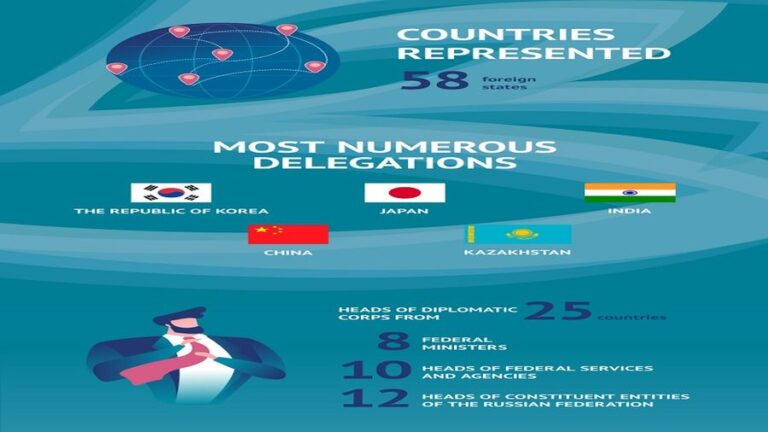“The Chips War”: The West versus China
Ever since the Biden Administration, alias the Globalists, took power in Washington, China was bombarded with threats and sanctions; foremost with attempts of “chips-strangulation”, meaning, being blocked for the chip production, and by supply chain disruptions of electronics, notably semiconductors.
The entire car industry could be paralyzed. While that would be great for the Global Warming / Climate Change freaks, not only the car industry, but also to a large extent the Military Industrial Complex (MIC) would suffer, as it also depends on such fast-evolving chips. A good thing as well!
The drawback with a production / supply interruption would be a slack in new chip-technology development which is subject to constant scientific research and trials.
You may call it the Chips War – West versus China. It had begun already some three years ago. At some point in 2022 rumors emerged that Mr. Biden was to blackmail Americans working in the Chinese chip-industry by taking their US citizenship away, if they would not quit their jobs immediately.
Of course, this is complete nonsense and would be totally unconstitutional. Not even King Biden could get away with acting on such a menace.
So far nothing happened, other than the US prohibiting Taiwan, the main producer of such valuable chips, to supply them to mainland China, and asking Taipei’s main chip manufacturer, Taiwan Semiconductor Manufacturing Co. (TSMC) to build with urgency a chip manufacturing facility in Arizona that should become operational in 2024.
TSMC chairman Mark Liu said, however, that the plant faced a shortage of workers with the “specialized expertise required for equipment installation in a semiconductor-grade facility.” Therefore, the TSMC chip plant in Arizona will have to postpone production until 2025, instead of 2024, as expected by the Biden Administration.
So much for Washington’s attempt to outpace Beijing in the global chip race by economically closely collaborating with Taiwan. Not to forget, Taiwan is seen by Beijing as an integral part of mainland China. See this for more details, see this.
What is the semi-conductor industry? For what are semiconductors used?
It is the industry in which companies conceive, design, and manufacture an electronic device, called semiconductors, a fundamental component of modern electronics, such as cell phones, televisions, and computers. As the world is becoming increasingly all-digitized, it will ever-more depend on computers and electronics to enhance the capabilities of devices ranging from doorbells to motor vehicles – and, not to forget the MIC. The semiconductor field is dominated by a handful of countries, though the field is growing and expanding rapidly.
According to the White House, the US currently produces roughly 10% of global semiconductor manufacturing, and China about 15%. However, the picture is much more complex.
Understanding the semiconductor manufacturing and user markets, let’s look at the world’s largest semiconductor producers.
Taiwan’s diplomatic status is part of mainland China. Only 12 countries recognize Taiwan as a sovereign nation. That is 6% of the tiniest of UN members. For all practical purposes, despite the US (which does not recognize Taiwan either as an autonomous and sovereign country), Taiwan must be considered as part of Mainland China. Thus, de facto, Taiwan’s production is part of China’s production. More on this later.
Taiwan Semiconductor Manufacturing Co. (TSMC) singlehandedly manufactures roughly 50% of the world’s semiconductors. Unlike semiconductor manufacturers such as Samsung or Intel, which produce semiconductors for use in their own products, TSMC manufactures semiconductors for many other companies, including Apple, Advanced Micro Devices (AMD), California, and more. This is known as the foundry model of business.
Taiwan’s success in the production of semiconductors emanates from a robust end-to-end semiconductor supply chain. Taiwan is home to thousands of semiconductor-related companies, which can collectively handle every aspect of the semiconductor manufacturing process, from designing the circuit to fabricating, manufacturing, and testing the final product. Taiwan is also home to many state-of-the-art manufacturing facilities, some of which can produce semiconductors that cannot be manufactured anywhere else in the world.
These traits make the Taiwanese semiconductor industry an ideal choice for companies which require semiconductors for their products, but which lack the funding and / or desire to build their own fabrication plant, which could cost a billion US-dollars, or more. On the downside, Taiwan’s notable success also means that if something goes wrong with semiconductor manufacturing in Taiwan, the entire world may feel the impact.
South Korea – multinational Samsung Electronics corporation is one of the world’s largest technology companies in terms of revenue as well as one of the largest single semiconductor-producing companies in the world. Samsung functions as both an Integrated Devices Manufacturer (IDM), making semiconductors for use in its own products, as well as a foundry, producing semiconductors for other companies. Semiconductors produced by Samsung and other companies (such as SK Hynix) in the country’s 70-plus fabrication plants, are South Korea’s largest export, and comprised 15% of the country’s total exports in 2021.
Japan – one of the world’s most technologically advanced countries is home to more than 100 semiconductor fabrication plants, most of which are owned by Japanese, American, or Taiwanese firms. As in other leading semiconductor manufacturing nations, the Japanese government is working to expand the country’s semiconductor manufacturing capabilities.
United States – possessed approximately 12% of the world’s global chip manufacturing capacity as of 2021. This is a notably lower percentage of global capacity than the US enjoyed just a few decades previously (37% in 1990), before countries such as Taiwan and China ramped up their semiconductor production capabilities. Nevertheless, the US semiconductor industry remains quite lucrative.
According to the Semiconductor Industry Association (SIA), semiconductors exports added US$62 billion to the US economy in 2021, more than any product other than refined oil, aircraft, crude oil, and natural gas. Many of the exported chips return to the US in the form of finished consumer electronics.
Despite holding just 12% of the manufacturing capacity, US-based companies held more than 45% of the total semiconductor market share. This apparent discrepancy may be explained by both the dollar value of imported US semiconductors, and the fact that many US-based companies own and operate semiconductor fabrication plants in other countries, such as Japan.
China – one of the world’s primary manufacturing hubs, is another country in the process of expanding its semiconductor manufacturing capacity. China is the world’s largest market for semiconductors, thanks in part to its massive electronics manufacturing sector. Nonetheless, the Chinese government has set out to expand the country’s manufacturing capabilities to the point that China becomes self-reliant, producing the required number of semiconductors domestically, with no need for imports. China is expected to produce up to 25% of the world’s semiconductors by the year 2030.
Other semiconductor producers with growing capacity include Israel, the Netherlands, Malaysia, the UK and Germany.
Semiconductor production and supply chain disruptions. The COVID-19 plandemic caused a severe slowdown in the manufacture of semiconductors, as well as in the transport of both raw materials and finished semiconductors, triggering a worldwide shortage. The US is now working to actively expand the country’s domestic semiconductor manufacturing capabilities.
For more details, see this.
Given this background, it may appear a bit naïve for the Biden Administration to declare that China should be barred from receiving new and updated semiconductor technologies and from exporting semiconductors. As the above overview indicates, many of the semiconductor manufacturer are to some extent interlinked, especially Mainland China and Taiwan.
In the semiconductor science and production, Mainland China and Taiwan have long been collaborating, meaning that Taiwan, mainly TSMC, has set up several manufacturing facilities in Mainland China. Electronics scientists and researchers as well as employees from Mainland China have been working for years in manufacturing, plants in Taiwan and vice-versa. There is also a semiconductor capital investments exchange between the two Chinese entities. See this for more details.
For this and other reasons it would be quite ingenuous for Biden’s people and the rest of the western world believing that China could be “strangled” – sanctioned, to use one of Washington favorite terms – through the semiconductor channel. If anything, by barring semiconductor exports from China, the west, mainly the US and by association, Europe, would merely shoot themselves in the foot – or higher; taking a further step to committing economic suicide. But maybe that is on the west’s agenda…
On a recent trip to China, when this topic came up, the Chinese counterparts insinuated that this issue is not new for them, that they had plenty of time to prepare for it (ever since the Globalist Washington Administration came to power and bragged about “sanctioning” China with semiconductors).
They added, if the west does not want Chinese semiconductors, no problem. There is a huge fast developing Asian market out there. They referred especially to the RCEP Free Trade Agreement which became effective on 1 January 2022.
RCEP stands for Regional Comprehensive Economic Partnership. It is a is a free trade agreement among the Asia-Pacific nations of Australia, Brunei, Cambodia, China, Indonesia, Japan, South Korea, Laos, Malaysia, Myanmar, New Zealand, the Philippines, Singapore, Thailand, and Vietnam. It is often referred to as “ASEAN plus Four”. RCEP is expected by 2030 to become the globe’s largest free trade agreement, exceeding the total of all other trade agreements in the world.
Finally, the Chinese hinted very realistically at the fact, that ultimately Taiwan and Mainland China are ONE country – meaning ONE semiconductor manufacturing nation. They added, that many if not most Taiwanese are tired of their “in-between” role, the stress related to a potential war fueled by Washington, and they would prefer to integrate into mainland China, the sooner the better.
It is a question of divided families and the understanding, of an already existing close cooperation, and an intense interchange of technology, capital, and scientific research between the two Chinese units, so that in the long run this is going to be the only peaceful solution for a prosperous cohabitation.
Now – who is winning and who is losing the “chip war”?






